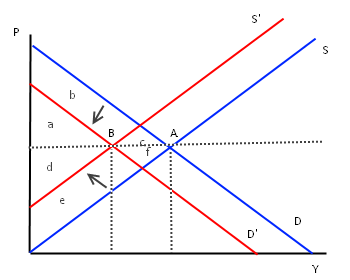Course:ECON371/UBCO2010WT1/GROUP1/Article5
Back to
Group 1
Article 5: NOAA and FDA Announce Gulf Seafood well within safety standards based on new, more stringent testing
Summary
The article discusses the study conducted by the National Oceanic and Atmospheric Administration (NOAA) and the Federal Department of Agriculture (FDA). This study is an more stringent extension of the testing and protocols adhered to by the federal, state and local officials in regards to the BP Gulf of Mexico oil spill. The study focuses on aquatic life and whether or not there are still visible remnants of the chemical dispersant used to contain the oil spill within these life forms. The study concludes that the few trace amounts that were found the within a very small proportion of the aquatic marine life is lower than the safety threshold and does not pose a health concern towards humans.
The new test used detects dioctyl sodium sulfosuccinate (DOSS), which is a major component in the dispersant used during the oil spill. It is also found in various household products and medication at very low levels. Previous scientific studies have concluded that DOSS does not build up within fish tissue, adding to the confidence of the NOAA that seafood from the Gulf region is safe to consume.
Analysis of Article
Because this article regards the environmental impact post-oil spill, the emission rate, or level is now zero. But because it is a catastrophic event, it created dramatic increase ambient pollution levels. Prior to analysis, sea products will be presumed by consumers, (and likely even producers) to be contaminated and unsafe to consume or use, which will cause the demand or willingness to pay as well as the the supply for ocean related products to fall (left graph; Y = Quantity). Countries along the Gulf of Mexico will also lose many trade opportunities. Imports and exports will drop, and the net level of exports (exports minus imports) may rise or fall.
Studies have proven the dispersant used by BP to be effective. The hope is that eventually all of the resources found in the ocean will be deemed safe again. The demand and supply curves related to any sea products will shift outwards, likely to a point similar to their original position (right graph). At this new equilibrium (A in the right graph), outputs will be higher in comparison to the equilibrium after the oil spill (B in the left graph). For simplicity in the graphing example below, it is assumed the demand and supply shift inwards the same amount; however, suppose the cost to clean up the oil spill is higher than expected. Because this means increased costs for the producer, it would result in the supply curve shifting inwards more than the demand curve which will cause a drop in the market price. This drop in market price may remain, even the supply and demand curves shift outward again. Now suppose the demand for sea products dropped because of consumer perception, in that people prefer safer products. The result would be an increase in price, which again may remain when the supply and demand curves shift outward again, depending on other market factors.
Suppose that the country in question is efficient, knows the position of the resulting supply and demand curves and produces at equilibrium; then there would be no deadweight during the shifts of the supply and demand curves. However, the oil spill causes the supply and demand curve for ocean products to shift inwards, where they would achieve a new equilibrium (left graph @ B). At this equilibrium, economic surplus has decreased. On the left graph, consumers lose (b+c), and producers lose (e+f). The of the studies done by the different levels of government in conjunction with with the study done by the NOAA and FDA causes and ease in consumer perception, and results in the supply and demand curves to shift outwards again (right graph, B to A), which will result in increase in economic surplus. As a result of this shift, consumers gain (a+c), and producers gain (d+e). But the new net economic surplus is most likely smaller than the original economic surplus before the oil spill because restoring the environment to its original state after a catastrophic event, and fully returning to the original equilibrium is nearly impossible. In other words, at equilibrium point A the graph on the left representing the market pre-spill has a larger economic surplus than the graph on the right at point A representing the market post-spill, and post-cleanup.
NOAA and FDA Announce chemical test for dispersant in Gulf Seafood benefits the Gulf of Mexico in at least two ways. First, this new test should help strengthen consumer confidence in Gulf seafood. This should aid most industries, including tourism and fishing in Gulf of Mexico to a quicker recovery. Second, the more rigorous testing done by the NOAA and FDA on aquatic life helps scientists to improve their methodology for future situations.
Conclusions
Evidently, the BP oil spill caused immense damages to the countires along the Gulf of Mexico. The spill rendered the sea and sea products alike unsafe, which in turn affected the trade of the goods. Although the damage is not completely reversible, BP is taking corrective steps in order to restore the sea products back to the pre-oil spill state. This will boost trade once again, and lead to trade gains. By taking measures to test for the presence of the dispersants they use in aquatic life, it will boost economic activity, by increasing consumers confidence in the sea products from the Gulf region.
Prof's Comments
Nice. You could have mentioned that one measure of the cost of the spill is the lost consumer surplus that occurred over the length of time that it was a problem. Also, the cost of the cleanup, etc.

